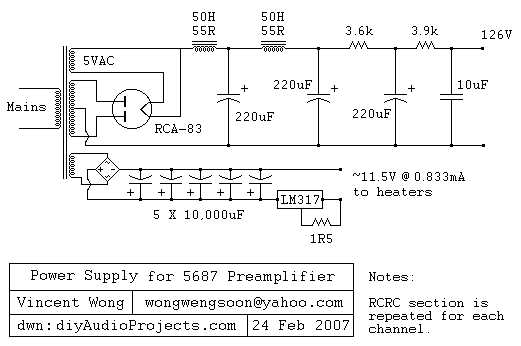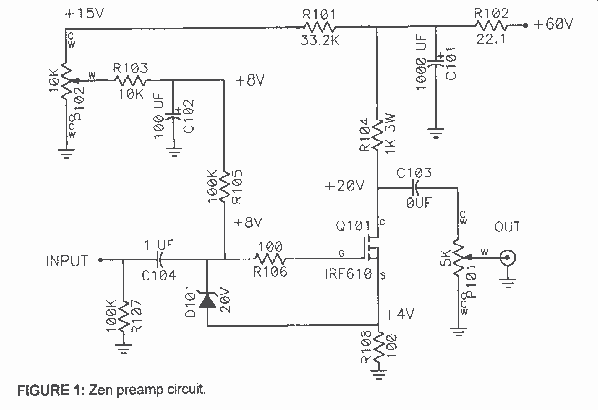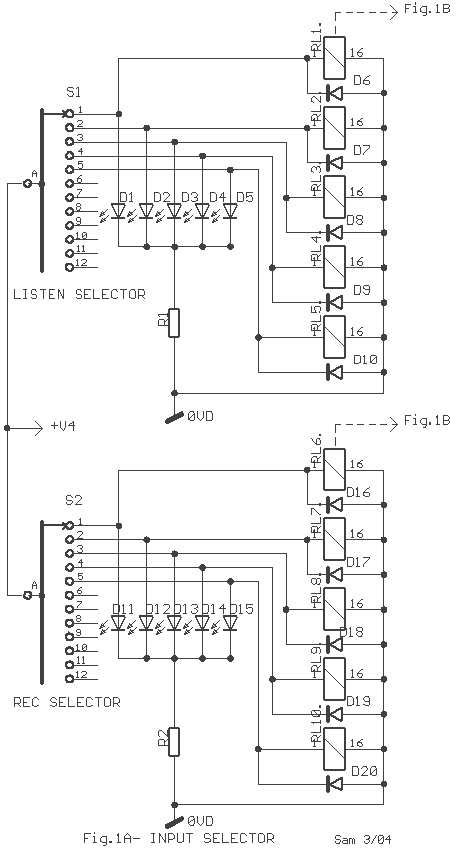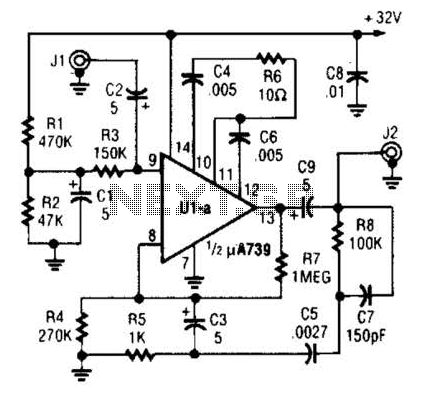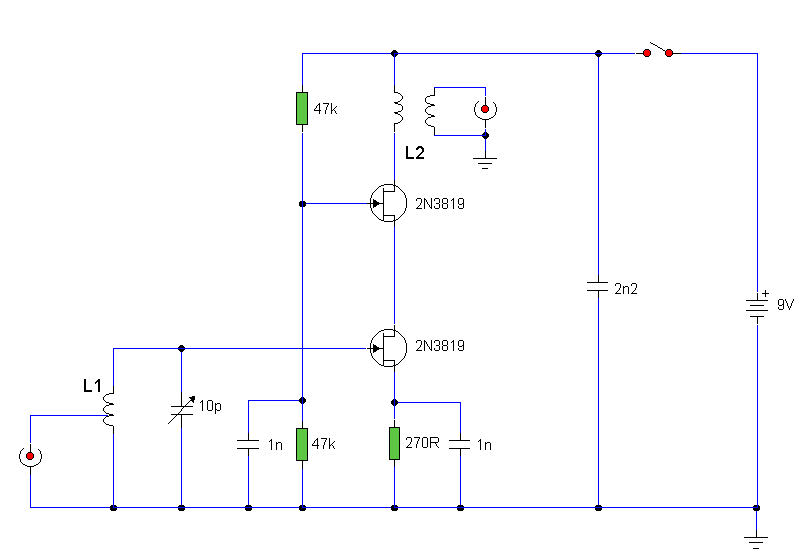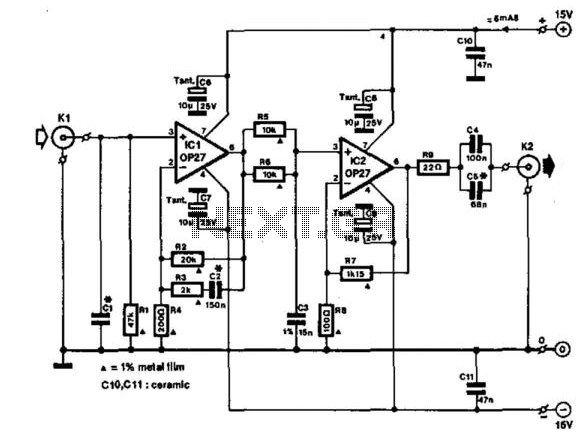
Multimedia RIAA Preamplifier
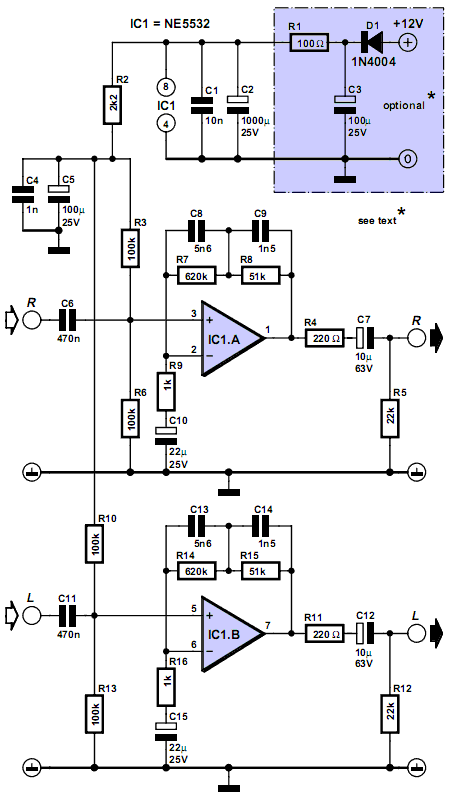
Although many album titles once available on vinyl are gradually being released as CDs, not all are accessible, leaving some valuable treasures in collections that individuals may wish to transfer to CDs. Preserving a CD is generally easier than maintaining a vinyl record, especially as turntables are becoming less common, even in fully-equipped Hi-Fi systems. From a software and PC perspective, converting vinyl to CD poses no significant challenges, as numerous programs, both paid and free, exist to remaster vinyl records with varying levels of success, effectively removing pops, crackles, and other unwanted noises. These programs utilize the sound card of a PC, which introduces certain issues. Most high-quality turntables feature a magnetic cartridge that typically outputs only a few millivolts. This signal needs to undergo a specific frequency correction known as RIAA correction. While older audiences may recall the significance of RIAA, those from the CD generation might misinterpret the acronym as relating to illegal music downloading. The mechanical aspects of vinyl engraving necessitate a high-boost frequency correction that adheres to a precise curve established by the Recording Industry Association of America, hence the term RIAA correction. The preamplifier for the magnetic cartridge is responsible for reversing this correction. Given that this correction amplifies lower frequencies, the preamplifier is particularly sensitive to unwanted noises, including hums from the 50-Hz or 60-Hz mains power supply. This sensitivity must be considered in the project, emphasizing careful attention to grounding and shielding. The schematic for the preamplifier is straightforward, utilizing a low-noise dual operational amplifier, specifically the NE5532. Its response curve is modeled by components R7, R8, C8, and C9 (or R14, R15, C13, and C14) to closely match the RIAA correction. The input impedance is set at 47 kΩ, a standard value for magnetic cartridges, with a 1,000-Hz gain of 35 dB, providing an output level of several hundred millivolts, suitable for the line input of PC sound cards. Shielded wiring is necessary between the cartridge and amplifier input to mitigate hum issues. Additionally, it is advisable to encase the assembly in a metal housing connected to the electrical ground. Three power supply options are presented: for purists wishing to eliminate noise entirely, a simple 9-V battery can be used, rendering the components indicated by dotted lines unnecessary. This solution is viable given the circuit's low current draw, unless one has an extensive vinyl collection. For a more sophisticated approach that may introduce some noise, components within the dotted lines can be connected to the 12 V positive voltage available from the PC, utilizing a Y-connector on the power supply of an internal drive or peripheral. Alternatively, a mains adapter set to 12 V can be employed, connected to the +12-volt point in the schematic to benefit from additional filtering, which can be beneficial in certain situations.
The preamplifier circuit described is essential for converting the low-level audio signals from a magnetic cartridge into a format suitable for digital conversion. The NE5532 operational amplifier is chosen for its low noise characteristics, which are critical in maintaining audio fidelity during the amplification process. The circuit must be designed to include RIAA correction, which is crucial for restoring the frequency response of the vinyl record to match that of standard audio playback. The input impedance of 47 kΩ is particularly important as it matches the output impedance of most magnetic cartridges, ensuring maximum power transfer and minimal signal loss.
The layout of the circuit should prioritize short signal paths and proper grounding techniques to reduce noise and interference. The use of shielded cables is recommended for the connections between the cartridge and the preamplifier to prevent electromagnetic interference. Additionally, the housing for the circuit should be constructed from metal to provide shielding from external noise sources, and it should be properly grounded to ensure a low-noise operation.
For the power supply options, the choice between a battery and a mains adapter should be made based on the user's needs and the potential for noise. The battery option provides the cleanest power source, ideal for audiophiles who prioritize sound quality. On the other hand, using a mains adapter can simplify the setup but requires careful consideration of potential noise filtering techniques to maintain audio integrity.
In summary, the design and implementation of the preamplifier circuit for converting vinyl to CD require careful attention to components, grounding, and shielding to ensure high-quality audio reproduction. The integration of RIAA correction and the choice of power supply will significantly influence the performance of the system, making it essential to consider these factors during the design phase.Even if a large number of album titles once available on vinyl are now, little by little, being proposed as CDs, not all are available and far from it. You may have treasures in your collection that you would like to burn on CDs. First, preserving a CD is easier than preserving a vinyl record, and second, we have to admit that turntables are disap
pearing, even on fully-equipped Hi-Fi systems. From a point of view of software and PCs, converting from vinyl to CD is not a problem. A large number of programs, whether paid for freeware, are available to re-master vinyl records with varying degrees of success and to eliminate pops, crackles and other undesirable noises. All of these programs work with the sound card of your PC and that, admittedly, is where the problem starts.
Most high-quality turntables are equipped with a magnetic cartridge which typically delivers just a few mV. The cartridge signal requires a correction of a specific frequency, called RIAA correction. If our older readers will perfectly recall what RIAA is all about, others from the CD generation may not know what the acronym RIAA stands for, guessing it may have something to do with illegal downloading of music on the Internet.
For mechanical reasons related to the vinyl engraving procedure, high-boost frequency correction is carried out while respecting a very precise curve defined a long time ago by the RIAA (Recording Industry Association of America) and, which therefore, quite naturally, was baptized RIAA correction. Reversing the correction is the role of to the preamplifier for the magnetic cartridge. Since this correction boosts the lowest frequencies, such a preamplifier is very sensitive to all undesirable noises, hums, including, of course, the one coming from the 50-Hz (or 60-Hz) mains power supply.
It is important to take that into account while making this project which must be done carefully with respect to grounding and shielding. The schematic of our preamplifier is very simple because it uses a very low-noise dual operational amplifier.
Here the NE5532 is used, whose response curve is modelled by R7, R8, C8, and C9 (or R14, R15, C13, and C14 respectively) in order to match the RIAA correction as closely as possible. The input has an impedance of 47 kR, which is the standardized value of magnetic cartridges, and its 1, 000-Hz gain is 35 dB which allows it to supply an output level of a few hundred mV typically required by for the line input of a PC sound cards.
The connection between the cartridge and the input of the amplifier requires shielded wiring to avoid the hum problems discussed above. Likewise we recommend fitting the assembly in a metal housing connected to the electric ground. With respect to the power supply, three solutions are proposed: If you are a purist and you want to rule out any noise whatsoever, you will utilize a simple 9-V battery.
Then, the components outlined with a dotted line will not be useful. Since the circuit only uses a few mA, such a solution is acceptable unless your collection of vinyls is impressive. If you desire a more elegant technical solution that might sometimes cause more undesirable noise on the signals, you may want to wire up the components within in the dotted lines and you can steal the 12 V positive voltage available from your PC.
A Y-connector inserted on the power supply of one of the internal drives or peripherals will work very well for that. Finally, you may also use a mains adapter set to 12 V and connect it to the +12-volt point of the drawing in order to benefit from additional filtering, which is not a luxury for some.
🔗 External reference
The preamplifier circuit described is essential for converting the low-level audio signals from a magnetic cartridge into a format suitable for digital conversion. The NE5532 operational amplifier is chosen for its low noise characteristics, which are critical in maintaining audio fidelity during the amplification process. The circuit must be designed to include RIAA correction, which is crucial for restoring the frequency response of the vinyl record to match that of standard audio playback. The input impedance of 47 kΩ is particularly important as it matches the output impedance of most magnetic cartridges, ensuring maximum power transfer and minimal signal loss.
The layout of the circuit should prioritize short signal paths and proper grounding techniques to reduce noise and interference. The use of shielded cables is recommended for the connections between the cartridge and the preamplifier to prevent electromagnetic interference. Additionally, the housing for the circuit should be constructed from metal to provide shielding from external noise sources, and it should be properly grounded to ensure a low-noise operation.
For the power supply options, the choice between a battery and a mains adapter should be made based on the user's needs and the potential for noise. The battery option provides the cleanest power source, ideal for audiophiles who prioritize sound quality. On the other hand, using a mains adapter can simplify the setup but requires careful consideration of potential noise filtering techniques to maintain audio integrity.
In summary, the design and implementation of the preamplifier circuit for converting vinyl to CD require careful attention to components, grounding, and shielding to ensure high-quality audio reproduction. The integration of RIAA correction and the choice of power supply will significantly influence the performance of the system, making it essential to consider these factors during the design phase.Even if a large number of album titles once available on vinyl are now, little by little, being proposed as CDs, not all are available and far from it. You may have treasures in your collection that you would like to burn on CDs. First, preserving a CD is easier than preserving a vinyl record, and second, we have to admit that turntables are disap
pearing, even on fully-equipped Hi-Fi systems. From a point of view of software and PCs, converting from vinyl to CD is not a problem. A large number of programs, whether paid for freeware, are available to re-master vinyl records with varying degrees of success and to eliminate pops, crackles and other undesirable noises. All of these programs work with the sound card of your PC and that, admittedly, is where the problem starts.
Most high-quality turntables are equipped with a magnetic cartridge which typically delivers just a few mV. The cartridge signal requires a correction of a specific frequency, called RIAA correction. If our older readers will perfectly recall what RIAA is all about, others from the CD generation may not know what the acronym RIAA stands for, guessing it may have something to do with illegal downloading of music on the Internet.
For mechanical reasons related to the vinyl engraving procedure, high-boost frequency correction is carried out while respecting a very precise curve defined a long time ago by the RIAA (Recording Industry Association of America) and, which therefore, quite naturally, was baptized RIAA correction. Reversing the correction is the role of to the preamplifier for the magnetic cartridge. Since this correction boosts the lowest frequencies, such a preamplifier is very sensitive to all undesirable noises, hums, including, of course, the one coming from the 50-Hz (or 60-Hz) mains power supply.
It is important to take that into account while making this project which must be done carefully with respect to grounding and shielding. The schematic of our preamplifier is very simple because it uses a very low-noise dual operational amplifier.
Here the NE5532 is used, whose response curve is modelled by R7, R8, C8, and C9 (or R14, R15, C13, and C14 respectively) in order to match the RIAA correction as closely as possible. The input has an impedance of 47 kR, which is the standardized value of magnetic cartridges, and its 1, 000-Hz gain is 35 dB which allows it to supply an output level of a few hundred mV typically required by for the line input of a PC sound cards.
The connection between the cartridge and the input of the amplifier requires shielded wiring to avoid the hum problems discussed above. Likewise we recommend fitting the assembly in a metal housing connected to the electric ground. With respect to the power supply, three solutions are proposed: If you are a purist and you want to rule out any noise whatsoever, you will utilize a simple 9-V battery.
Then, the components outlined with a dotted line will not be useful. Since the circuit only uses a few mA, such a solution is acceptable unless your collection of vinyls is impressive. If you desire a more elegant technical solution that might sometimes cause more undesirable noise on the signals, you may want to wire up the components within in the dotted lines and you can steal the 12 V positive voltage available from your PC.
A Y-connector inserted on the power supply of one of the internal drives or peripherals will work very well for that. Finally, you may also use a mains adapter set to 12 V and connect it to the +12-volt point of the drawing in order to benefit from additional filtering, which is not a luxury for some.
🔗 External reference
Warning: include(partials/cookie-banner.php): Failed to open stream: Permission denied in /var/www/html/nextgr/view-circuit.php on line 713
Warning: include(): Failed opening 'partials/cookie-banner.php' for inclusion (include_path='.:/usr/share/php') in /var/www/html/nextgr/view-circuit.php on line 713
